
My Generation is the debut studio album by English rock band the Who, released on 3 December 1965 by Brunswick Records in the United Kingdom, and Festival Records in Australia. In the United States, it was released on 25 April 1966 by Decca Records as The Who Sings My Generation, with a different cover and a slightly altered track listing. Besides the members of the Who, being Roger Daltrey (vocals), Pete Townshend (guitar), John Entwistle (bass) and Keith Moon (drums), the album features contributions by session musician Nicky Hopkins (piano).

The Who Sell Out is the third studio album by the English rock band the Who. It was released on 15 December 1967 by Track Records in the UK and Decca Records in the US. A concept album, The Who Sell Out is structured as a collection of unrelated songs interspersed with fake commercials and public service announcements, including the second track "Heinz Baked Beans". The album purports to be a broadcast by pirate radio station Radio London. The reference to "selling out" was an intended irony, as the Who had been making real commercials during that period of their career, some of which are included as bonus tracks on the remastered CD.
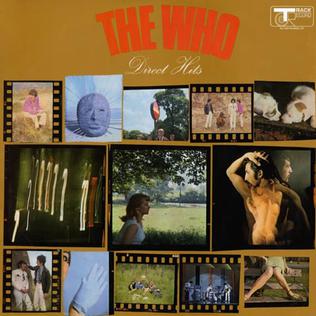
Direct Hits is the first UK compilation album and the fourth UK LP released by The Who. It collects singles, B-sides, and album tracks originally recorded for Reaction Records and Track Records between 1966 and 1968.

Meaty Beaty Big and Bouncy is a compilation album of singles by English rock band the Who, released in 1971 as Track 2406 006 in the UK and as Decca DL 79184 in the US. It entered the US Billboard 200 chart on 20 November 1971, peaking at number 11, and the UK chart on 3 December 1971, peaking at number 9.
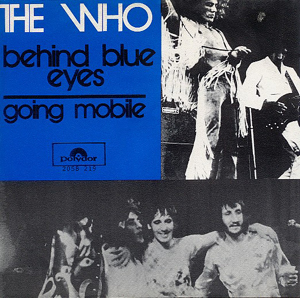
"Going Mobile" is a song written by Pete Townshend and originally released by the Who on their 1971 album Who's Next. It was originally written for Townshend's abandoned Lifehouse project, with lyrics celebrating the joy of having a mobile home and being able to travel the open road. The Who's lead singer Roger Daltrey did not take part in the recording of the song, leaving the rest of the band to record it as a power trio; Townshend handles the lead vocals, guitars, and synthesizers, with John Entwistle on bass guitar and Keith Moon on drums. The song has attracted mixed reviews from music critics. This is one of only two songs on Who's Next not to feature Daltrey.
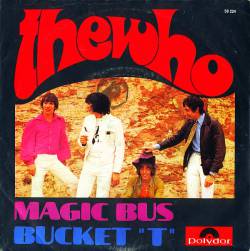
"Magic Bus" is a song recorded by British rock band the Who. It was written by their guitarist Pete Townshend during the time that their debut album My Generation was being recorded in 1965. However, it was not recorded until 1968, when it was released as a single on 27 July 1968 in the United States and Canada, followed by its release in the United Kingdom on 11 October 1968. It has become one of the band's most popular songs and has been a concert staple, although when released, the record only reached number 26 in the UK and number 25 in the United States. The song was included on their 1968 album Magic Bus: The Who on Tour.
"Getting in Tune" is a song written by Pete Townshend and originally released by the Who on their 1971 album Who's Next. It was originally written as part of Townshend's abandoned Lifehouse project. Its lyrics describe the power of music, as well as reflect the inner contradictions Townshend was feeling at the time between his spiritual needs and his persona as a rock star. The music incorporates a number of changes in tempo and has been praised by critics for its use of dynamics.
"The Acid Queen" is a song written by Pete Townshend and is the ninth song on the Who's rock opera album Tommy. Townshend also sings the lead vocal. The song tells the attempts of Tommy's parents to try to cure him. They leave him with an eccentric gypsy, a self-proclaimed "Acid Queen", who feeds Tommy various hallucinogenic drugs and performs sexually in an attempt to free him from isolation.
"Love Ain't for Keeping" is a song written by Pete Townshend and originally released by the Who on their 1971 album Who's Next. Its themes include the joy of physical love, the power of nature and the need to live for the moment.

Who's Missing is a compilation of rare and previously unreleased songs by the English rock band the Who. Its second part, Two's Missing, was released on 11 April 1987.

"La-La-La-Lies" is the fourth track on the Who's debut album My Generation. It was written by lead guitarist Pete Townshend.

Rarities Volume I & Volume II is a two-album series collecting songs by The Who, released in 1983 on Polydor in the United Kingdom.

"Don't Let Go the Coat" is a song written by Pete Townshend and first released on The Who's 1981 album Face Dances.
"Tattoo" is a song written by Pete Townshend that was first released by The Who on their 1967 album The Who Sell Out. A "rite of passage" song, "Tattoo" tells the story of two teenaged brothers who decide to get tattoos in their attempts to become men. Themes of the song include peer pressure to conform and young men's insecurity about their manhood. The song has been heavily praised by critics and has appeared on several of The Who's live and compilation albums. It has also been covered by Tommy Keene and Petra Haden.
"Odorono" is a song written by Pete Townshend that was first released by English rock band The Who on their 1967 album The Who Sell Out. Townshend sings the lead vocal rather than normal Who lead singer Roger Daltrey. The song praises the virtues of an actual American deodorant named Odorono.
"Bargain" is a song written by Pete Townshend that was first released by the Who on their 1971 album Who's Next. It is a love song, although the intended subject of the song is God rather than a woman. The song has been included on several compilation and live albums. It was also included on several of Townshend's solo projects. Critics have praised the song's lyricism and power, as well as the performance of the band on the song. Townshend acknowledged during the Who's concert at the Prudential Center in Newark on 19 March 2016 that this is his favorite song on the album.
The Who Tour 2000 was partially in support of The Who's live album The Blues to the Bush and their first full-fledged tour as a five-piece band since The Who Tour 1982.
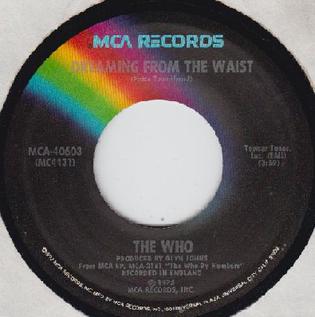
"Dreaming from the Waist" is a song by The Who, written by Pete Townshend and released on the group's 1975 album The Who by Numbers ; it also served as the B-side of the "Slip Kid" single, released in 1976 in the United States. The track's lyrics deal with sexual frustration and the restlessness associated with getting older, while the music features a bass solo from John Entwistle.

"It's Hard" is a song written by Pete Townshend that featured on British rock band The Who's tenth album, It's Hard, of which it was the title track. It was released as the third and final vinyl single from the album in 1983, backed with the John Entwistle written song "Dangerous", but failed to chart, although it reached number 39 on the Billboard Hot Mainstream Rock Tracks. This would become the last Who single of new material until "Real Good Looking Boy" in 2004, and the last album single by them until "Black Widow's Eyes", two years later.
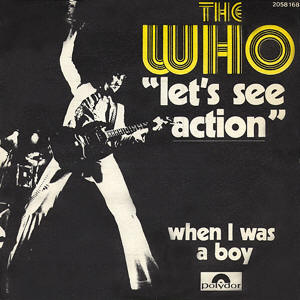
"Let's See Action" is a song written and composed by Pete Townshend and recorded by the Who. It was released as a single in the UK in 1971 and reached #16 in the charts.













